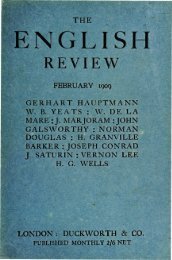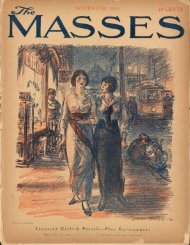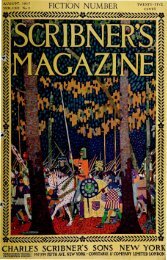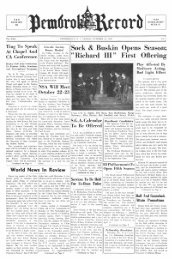View PDF - Brown University Library
View PDF - Brown University Library
View PDF - Brown University Library
- No tags were found...
You also want an ePaper? Increase the reach of your titles
YUMPU automatically turns print PDFs into web optimized ePapers that Google loves.
38 The Arctic Hospitalimportant tributary, the Porcupine, with500 miles of navigable length, and a littlelower down the Chandalar comes in fromthe northwest. Many other streams,each with its complement of native inhabitants,join with the Yukon or withone of these large tributaries in this neighborhood,so that Fort Yukon has longbeen a centre for mission and for tradingpurposes, and may be described as thenative metropolis of these parts—of thegreat central basin of the interior knownas the "Yukon Flats."On the Yukon River itself, 350 milesup-stream from Fort Yukon, is Dawson,the capital of the Yukon Territory, witha hospital; and 350 miles down-stream isFort Gibbon, with its post surgeon andhospital; but the former is in Canada andwill not receive Alaskan Indians, and thelatter is a military hospital and will notreceive Indians at all.St. Stephen's Hospital is primarily apart of a plan to provide medical care forthe natives of interior Alaska, long neglectedin this respect by the governmentof the United States, and owes its establishmentto the efforts of Bishop Roweand his clergy, and its support to the missionarysociety of the Episcopal Church.Ever since the Territory came underAmerican rule the medical needs of thenatives have been urged upon the government.The reports of the earliest governorsof Alaska beg for prompt considerationof the matter; the report of the lastgovernor returns energetically to thecharge. Says Governor Strong (Reportof 1917): "Without medical relief allother plans for the natives are necessarilyfutile. While the service now renderedin the few places mentioned is efficientand valuable, the total results are meagrewhen compared with the total nativepopulation."The recent reading of a long file ofgovernors' reports and educational reportsand special agents' reports leadsto a question whether the governmentprinters are not those chiefly benefitedby the preparation and publication ofsuch documents. For all the effect producedby them they might as well havebeen corked up in bottles and year byyear cast solemnly into the sea; theywould have had as much influence in thebellies of sharks and whales as in theirrespective pigeonholes at Washington.Thirty years ago the same needs wereurged, the same glaring faults and incongruitiesof administration were pointedout, the same suggestions for improvementwere made, "most earnestly andrespectfully," as appear in the reportsto-day.The few places referred to by GovernorStrong where medical aid to the natives isfurnished by the government are mostlyon the coasts; for the whole of the interiora makeshift hospital at Nulato is the onlygovernment provision, unless the supplyingof some drugs and bandages and linimentsto school-teachers without anymedical training be counted; and Nulatois upward of 500 miles from Fort Yukon.What has been gained from Congress forthe care of the natives has been gained bythe ceaseless importunities of the Bureauof Education. Last year the bureau succeededin securing an appropriation of$50,000, instead of the $25,000 previouslyappropriated for medical relief, but thepresent appropriation would have to bemultiplied a number of times to enablethe bureau to cope with the conditions.So the hospital at Fort Yukon, whichitself cost $25,000, and has a maximumaccommodation of 20 beds, is part of aplan to supply the deficiencies of thegovernment. It receives and cares forsick or injured natives regardless of anyconsideration except the needs of the individualcase; it even sends for them andbrings them in by a dog team in the winterand a launch in the summer, if there beno other ready means of their coming. Itdoes not care whether they be Alaskan orCanadian Indians (an often impossibledistinction amongst people some ofwhom shift their residence back and forthacross the international boundary asfreely as they did before that line wasdrawn). If they be in need of medicalattention, they are welcome to the bestwe can give, without any charge whatever.But while primarily a native hospital,it does not refuse white patients—howcould it when there is nowhere else to go ?It reserves a room for them, and in thethree years in which it has been in operationhas received a number from far andnear. The first patient of any kind, be-










